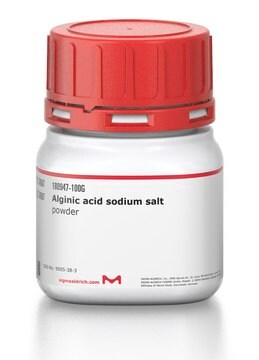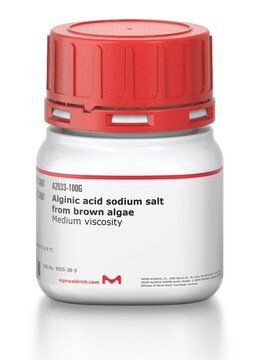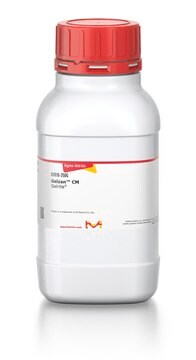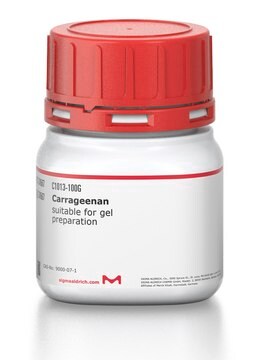G1253
Xanthan gum from Xanthomonas campestris
Synonym(s):
Gum xanthan
Sign Into View Organizational & Contract Pricing
All Photos(2)
About This Item
Recommended Products
biological source
Xanthomonas campestris
Quality Level
form
powder
color
faint yellow to beige
storage temp.
room temp
InChI
1S/C13H10O/c1-3-7-12-10(5-1)9-11-6-2-4-8-13(11)14-12/h1-8H,9H2
InChI key
GJCOSYZMQJWQCA-UHFFFAOYSA-N
Looking for similar products? Visit Product Comparison Guide
Application
Xanthan gum is an anionic polysaccharide composed of a β-(1→4)-D-glucopyranose glucan backbone with side chains of (1→3)-α-D-mannopyranose-(2→1)-β-D-glucuronic acid-(4→1)-β-D-mannopyranose on alternating residues. Approximately half of the terminal mannose residues are 4,6-pyruvated while most of the inner mannose residues are 6-acetylated. Its properties make it a useful matrix component for drug delivery systems. It forms stable drug suspensions in aqueous media and soft gels with locust bean gum or guar gum. Xanthan gum mimics the texture of lipids and is used as a control in experiments where signaling pathways initiated by consumption of lipid-containing reagents are investigated in mice.
Other Notes
A polysaccharide containing glucose, mannose, potassium glucuronate, acetate and pyruvate. Forms a hydrophilic colloid.
To gain a comprehensive understanding of our extensive range of Polysaccharides for your research, we encourage you to visit our Carbohydrates Category page.
Storage Class Code
11 - Combustible Solids
WGK
WGK 1
Flash Point(F)
Not applicable
Flash Point(C)
Not applicable
Personal Protective Equipment
dust mask type N95 (US), Eyeshields, Gloves
Certificates of Analysis (COA)
Search for Certificates of Analysis (COA) by entering the products Lot/Batch Number. Lot and Batch Numbers can be found on a product’s label following the words ‘Lot’ or ‘Batch’.
Already Own This Product?
Find documentation for the products that you have recently purchased in the Document Library.
Customers Also Viewed
Eyal Rahav et al.
Frontiers in microbiology, 4, 227-227 (2013-08-30)
We measured N2 fixation rates from oceanic zones that have traditionally been ignored as sources of biological N2 fixation; the aphotic, fully oxygenated, nitrate (NO(-) 3)-rich, waters of the oligotrophic Levantine Basin (LB) and the Gulf of Aqaba (GA). N2
M Jain et al.
Phytopathology, 109(10), 1811-1819 (2019-05-16)
'Candidatus Liberibacter' spp. are uncultured insect endosymbionts and phloem-limited bacterial plant pathogens associated with diseases ranging from severe to nearly asymptomatic. 'Ca. L. asiaticus', causal agent of Huanglongbing or citrus "greening," and 'Ca. L. solanacearum', causal agent of potato zebra
Manuel Viuda-Martos et al.
Food & function, 9(1), 573-584 (2017-12-22)
The aim of this work was to determine the protective effect of different dietary fibers on (i) the recovery and bioaccessibility indexes, and (ii) the stability of polyphenolic compounds (phenolic acids, flavonoids and anthocyanins) of maqui berry powder subjected to
Yunmei Luo et al.
International journal of biological macromolecules, 144, 967-977 (2019-11-11)
Controlling and delaying the retrogradation of gelatinized rice starch (GRS) can improve the quality of GRS-based foods during storage. Here, we evaluated the influence of corn protein hydrolysates (CPHs), rice protein hydrolysates (RPHs), wheat protein hydrolysates (WPHs), and soybean protein
An Thi-Binh Nguyen et al.
Food chemistry, 239, 742-750 (2017-09-07)
Dextran or xanthan were used as model exocellular polysaccharides (EPS) to compare the extraction efficiency of EPS from skim milk acid gels using three different protocols. Extraction yields, residual protein concentrations and the macromolecular properties of extracted EPS were determined.
Our team of scientists has experience in all areas of research including Life Science, Material Science, Chemical Synthesis, Chromatography, Analytical and many others.
Contact Technical Service









